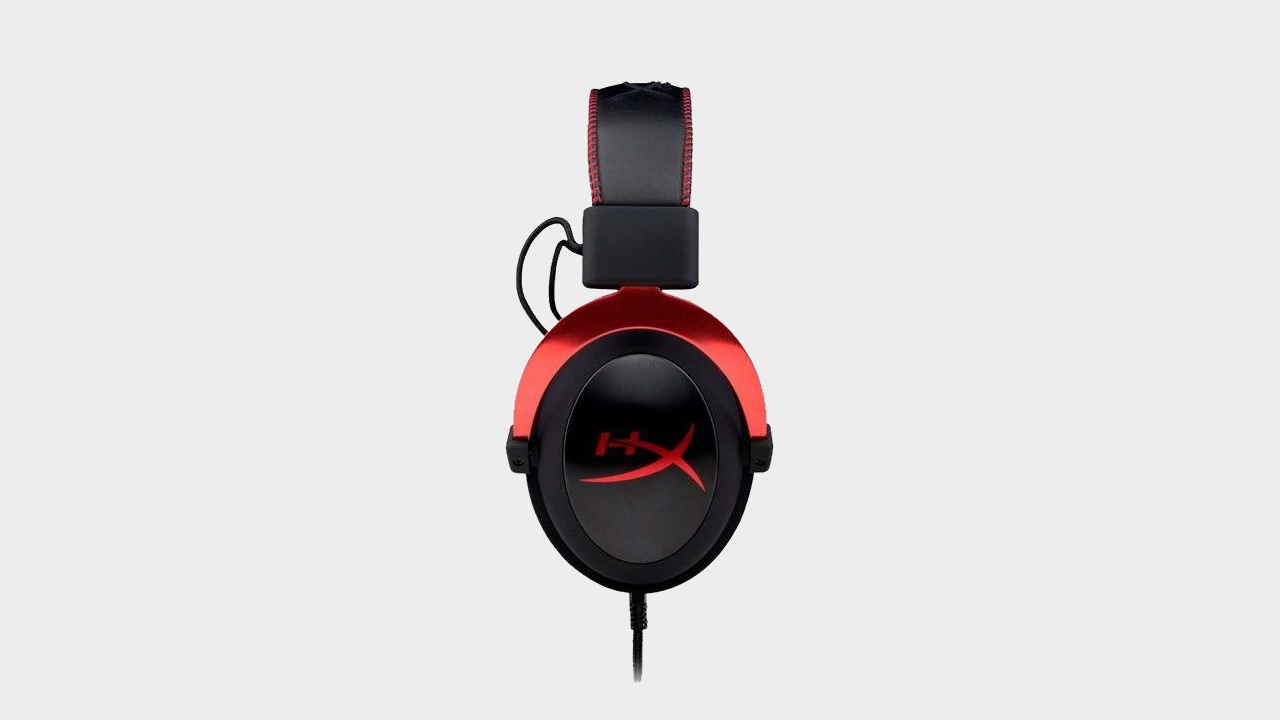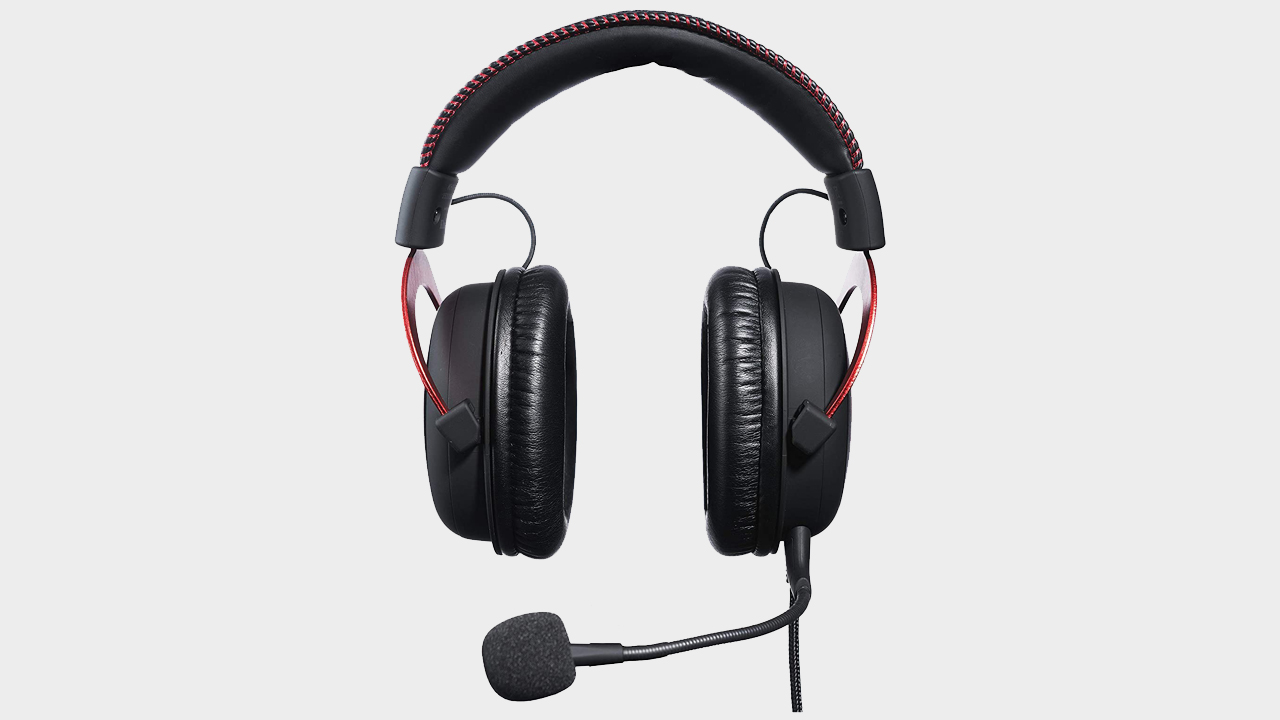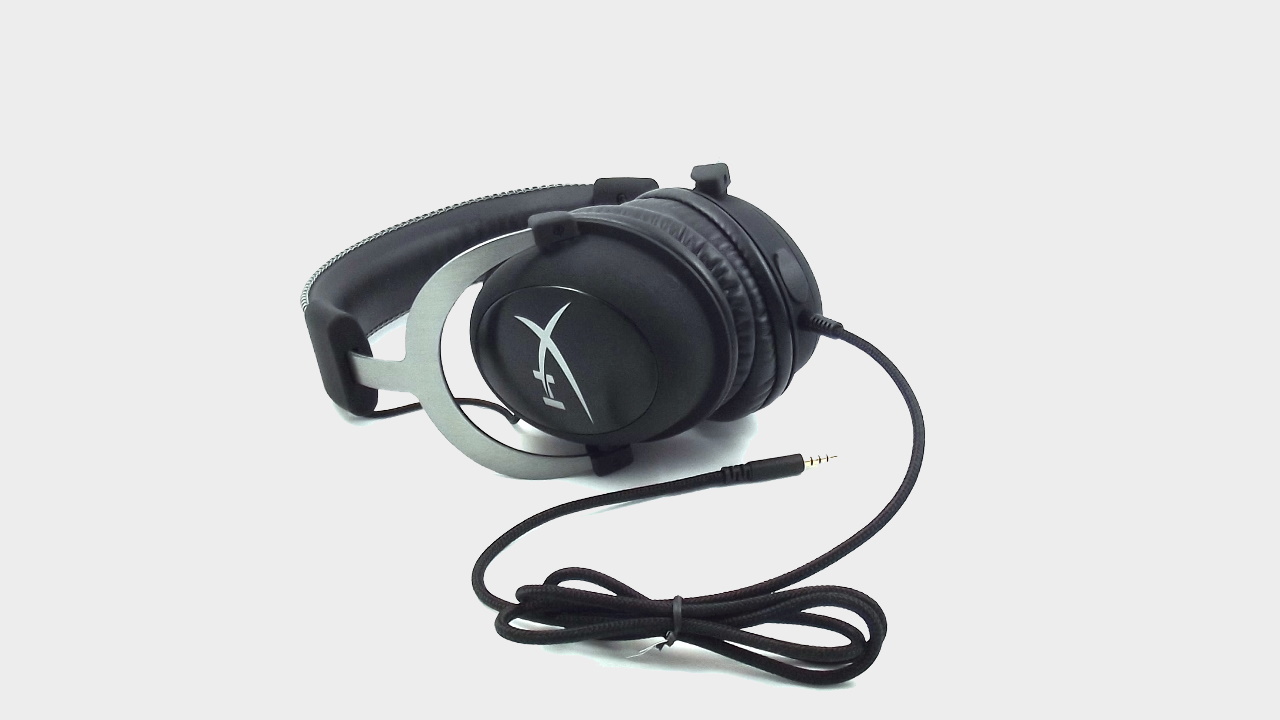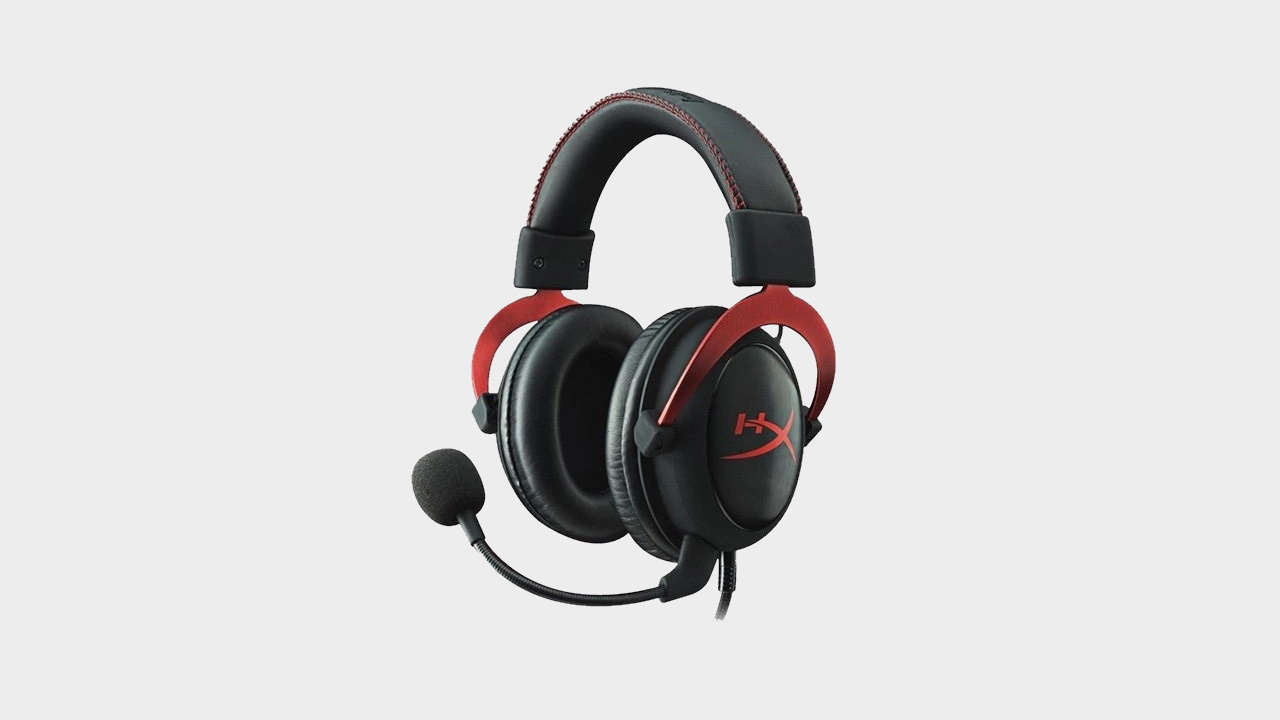GamesRadar+ Verdict
There's a decent sound quality and excellent design in HyperX's follow up to its Cloud gaming headset, though new features like 7.1 surround fail to deliver.
Pros
- +
Lightweight and comfortable
- +
Gorgeous design
- +
Nice mid and high range sound profile
Cons
- -
7.1 surround sound struggles to come through
- -
Muddy low ranges
Why you can trust GamesRadar+
The HyperX Cloud II gaming headset doesn't look like your stereotypical gaming headset - in fact, it looks much better. But get them on your head and that stylish design isn't the most important factor pushing these sub-$100 headphones off the shelves. With the second generation comes 7.1 surround sound, two choices of cushion, and a noise-cancelling microphone. While some of these features don't live up to expectations, you're still getting that HyperX sound profile and a supremely comfortable fit.
Design

The design of the HyperX Cloud II is possibly its biggest selling point. Metal-brushed prongs hold each swivel-able cup, with a particularly pleasing red tint no less. Those cups themselves are surprisingly comfortable considering we've tested far more expensive headphones that don't reach the same level of comfort. That's because of a fairly roomy size that still keeps each ear snug in your choice of leather or velour cushion.
That choice is more welcome than you might think: if you prefer a softer finish the velour will offer up a plush but firm experience, but the leather version keeps things cool but don't risk sitting too hard against the head (or the tops of your ears).
These cups, as well as the cushioned leather headband, will see you through particularly long sessions with ease, and the red accents with slick black profile look sophisticated on any desk. And we mean any desk - even if you're just picking up a pair of new headphones that will also serve you well for gaming. There's no glaring LEDs, no garish color patterns, and an easily recognizable structure that make these headphones look good no matter how they're used.
Features
Type: Wired
Sound output: Virtual 7.1 surround sound
Compatibility: PS4, Xbox One, Nintendo Switch, PC
Drivers: 53mm Neodymium
Frequency response: 15 - 25000Hz

There are a few features that separate the HyperX Cloud II headset from others in its price range. Under the hood you'll find 53mm Neodymium drivers, a slightly wider frequency response range, and virtual 7.1 surround sound. While some of these features pull through more than others, having them there certainly fills the final result with value.
As a wired headset, you're not getting some of the 'walk away' functionality here, though there is a USB dongle included - an additional accessory more commonly found in more expensive wireless headsets. This PC plugin will allow you to toggle virtual 7.1 surround sound and control mic and audio volume.
Not only that, but there's a pleasantly long cable attached to this control panel, meaning it's easy to wire into your existing setup and place around your desk as you please.
There's no audio customization options, however, which may put those looking for a PC-first experience off. Instead, you're left with the native EQ here.
Performance
You're getting excellent design and some nice features at this price point, which is why it's a little disappointing that the performance doesn't always follow through.
We struggled to make the 7.1 surround sound pop, with directional audio coming through in vague patches rather than the precise information you might expect from a headset toting this fairly premium feature. Drips and creaks from Resident Evil 7 come through more as waves from a general direction, which means you won't exactly be able to pinpoint a location. It's disappointing, but this is a cheap headset. That said, we wouldn't recommend picking this up if you're looking to make the most of PC-only features - this headset is a great shout if you're looking to pick up a value-busting contender for best PS4 headset or best Xbox One headset at the end fo the current generation cycle.
As we mentioned before, there are no separate EQ customization options here. That may be a little limiting considering the muddy lower range straight out the box. However, you're getting a solid (if a little flat) soundscape here that, while prioritizing power over detailing.

The bass range suffers from this lack of detail more than the mid and highs, which is to be expected in a gaming headset but may prove annoying if you're looking to listen to music with these as well. Doom Eternal offered up an excellent full-bodied sound, but a muddy bass did sometimes threaten to overwhelm.
Jumping into Crash Bandicoot 4, however, and higher frequencies come into their own, with a rich and powerful audio quality that fills the ears with all the delights of intricate box smashes and the whirl of a well-timed spin.
New to the Cloud II headset is the noise-cancelling microphone. It's a nice mic, for sure, but if you're after a PC headset with a good one, there are better headsets out there, and ones that will also offer audio customization and effective 7.1 surround sound. You might be paying a little more for these, but it's not worth prioritizing this microphone - you'll get a nice quality but the noise cancellation here isn't leading in that department.
Overall - should you buy it?
The HyperX Cloud II offers up a strong audio profile in the mid and high ranges, and a powerful bass effect whether you love it or hate it. With little customization options, a very limited surround sound that never felt like it reached 7.1 channel levels in our testing, and a wired connection, however, this isn't a gaming headset that will go into best PC headset for gaming guides and thus isn't for PC players - you'll want to stick to the famous HyperX Cloud Alpha, which is probably the best HyperX headset still. The Cloud II suffers a little from being in the shadow of the Alpha, too. However, though the additional USB dongle will allow you to control audio and mic volume on the fly on PC, this is very much a better buy if you're after a cheap everyday console headset.

Managing Editor of Hardware at GamesRadar+, I originally landed in hardware at our sister site TechRadar before moving over to GamesRadar. In between, I've written for Tom’s Guide, Wireframe, The Indie Game Website and That Video Game Blog, covering everything from the PS5 launch to the Apple Pencil. Now, i'm focused on Nintendo Switch, gaming laptops (and the keyboards, headsets and mice that come with them), PS5, and trying to find the perfect projector.



